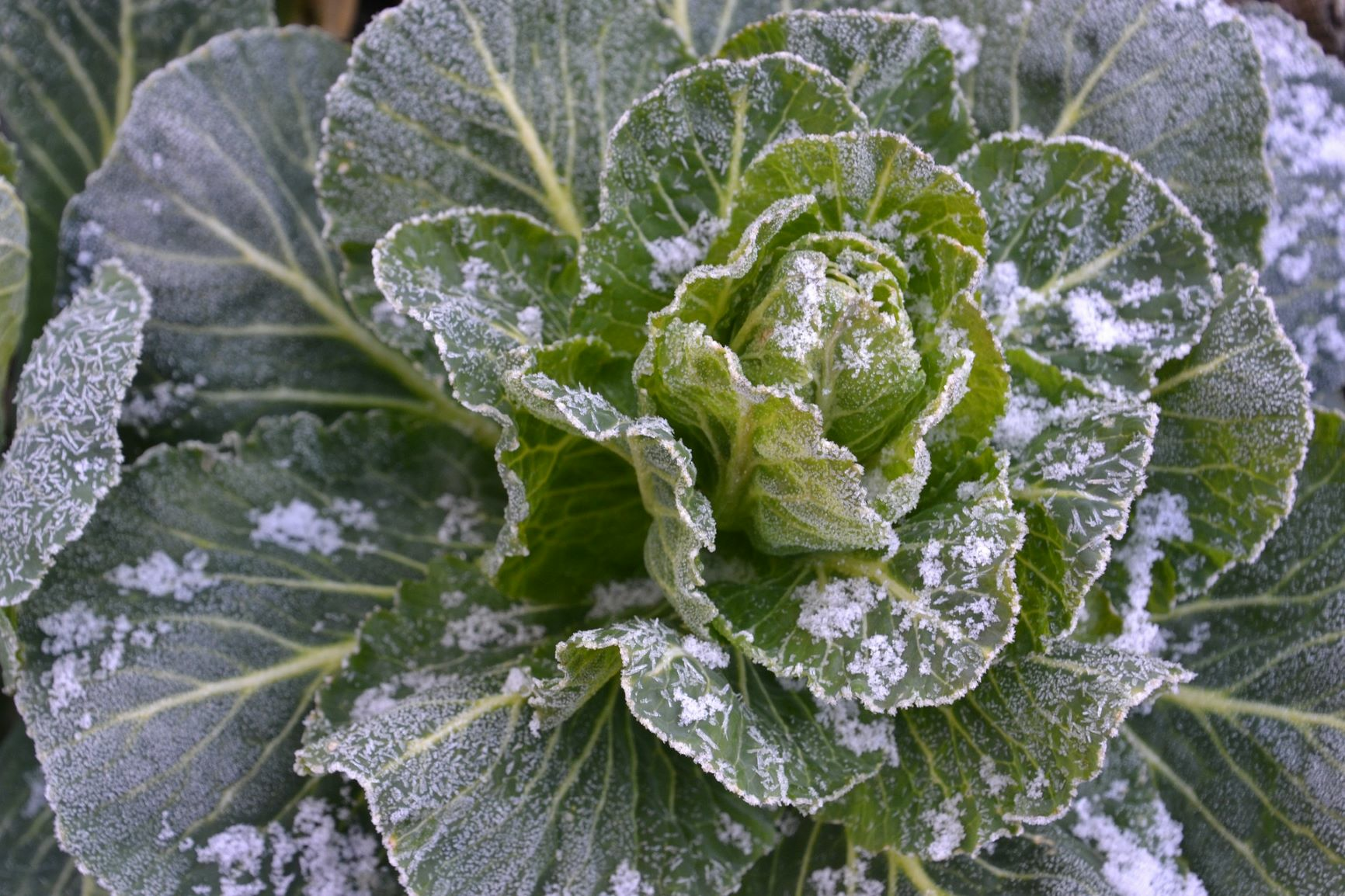
Growing and Planting Winter Vegetables: It’s That Simple
What, you can also garden in winter? It's hard to believe, but you can also plant and harvest vegetables during the cold season. Especially if you want to be self-sufficient, it's a good idea to use the winter to grow your own vegetables. In this article, you can find out which varieties you can grow and what you need to consider in the open field, on the balcony or in raised beds in winter.
This Article Contains:
- Growing Vegetables in Winter: These Options Are Available
- Planting Winter Vegetables: The Right Time to Sow
- What Can You Grow in Winter?
- Which Vegetables Can Be Planted and Sown in the Fall?
- Planting Winter Vegetables on the Balcony
- Mixed Crop Planting Plans for the Winter: Examples and Ideas
- Raised Beds in Winter: Here’s What to Keep In Mind
- Winter Vegetables: The Right Time for Sowing, Planting & Harvesting (PDF)
- Frequently Asked Questions About Planting and Growing Winter Vegetables
Quick Overview
Sowing and Planting Vegetables in Winter
- slow-growing winter vegetables (approx. 100 days):
- Rose cabbage, Chinese cabbage, savoy cabbage, Jerusalem artichokes, beet, parsnips and salsify
- Sowing: April - June
- Medium-fast growing winter vegetables (approx. 55-70 days):
- Butter cabbage, green cabbage, Chinese cabbage and sugar loaf
- Sowing: July - August
- Fast-growing winter vegetables (approx. 40-50 days):
- Spinach, lamb's lettuce, winter purslane, winter cress or Swiss chard
- Sowing: September - October
Growing Winter Vegetables on the Balcony
- In a raised bed or when growing in pots, you should add a layer of insulation. Wrap the raised bed or pots with insulating material such as fleece or coconut matting. A layer of mulch can also help to retain heat in the soil.
- Winter vegetables for the balcony or raised bed:
- Swiss chard, lamb's lettuce, kale, butter cabbage, savoy cabbage, beet and spinach
Growing Vegetables in Winter: These Options Are Available
There are various ways to grow your own vegetables in winter. Below we show you how winter vegetable growing can work.
Protected Cultivation in the Greenhouse
Protected cultivation means that you want to "protect" your crops from environmental influences such as the cold. You can do this with foil tunnels, fleece or in a greenhouse, for example. This allows you to extend the harvest season so that you can still harvest in winter. In Central Europe, crops such as tomatoes are produced almost exclusively in protected cultivation. The risk of disease would be far too great outdoors, so they are grown in greenhouses all year round. You can find out How to Winterize Your Greenhouse and a Planting Plan for the Greenhouse in Winter in this article.
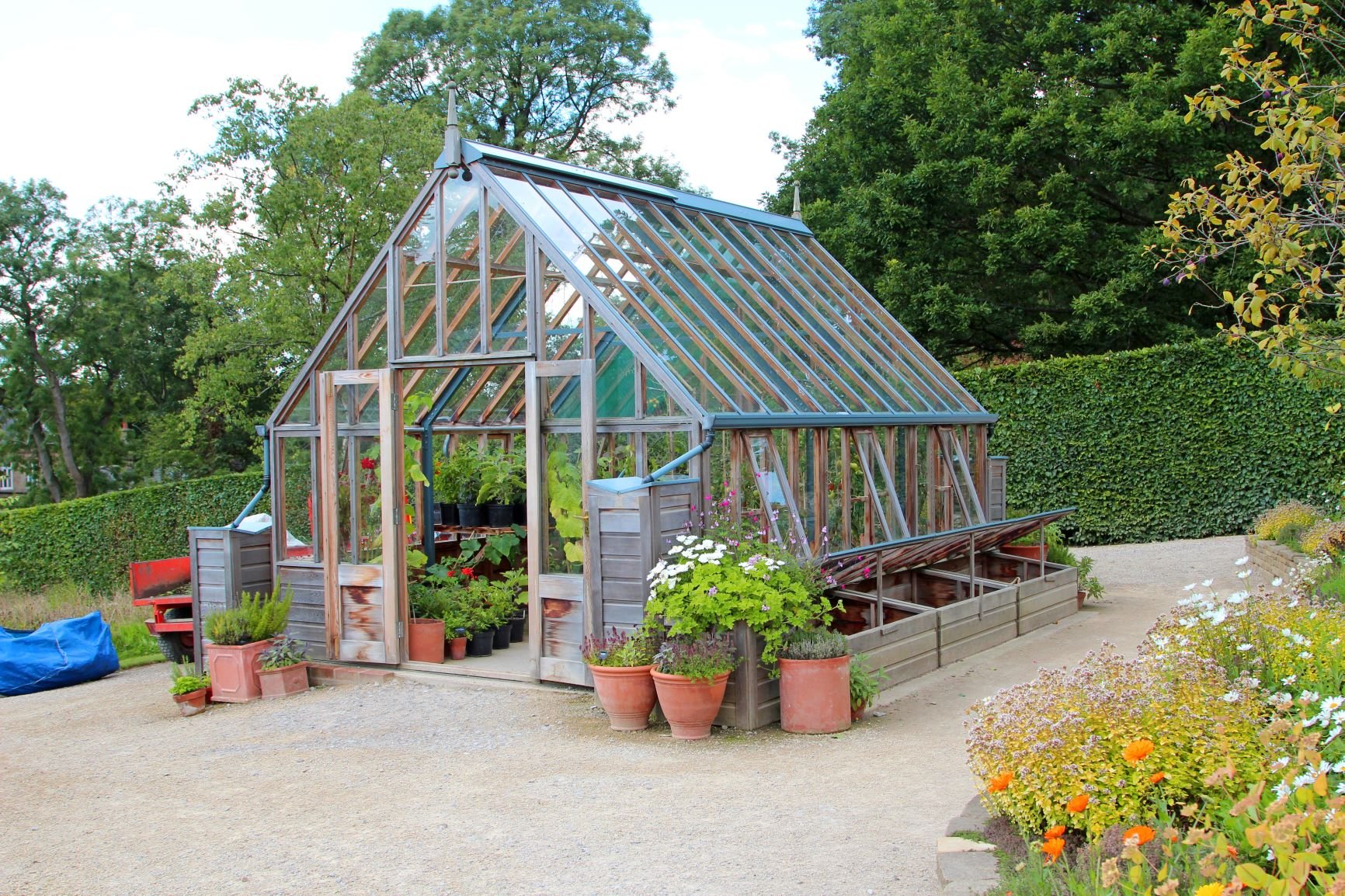
Outdoor With Frost-Hardy Varieties
A few crops can also be grown outdoors in winter. Some frost-hardy varieties can withstand the cold or only become tasty at low temperatures. This is mainly due to the starch in the plants, which is converted into sugar by the cold. Outdoors, you can also protect your plants with a layer of mulch. Cabbages, root vegetables and winter lettuces are well-known representatives of winter vegetables. You can find out which varieties are suitable for outdoor cultivation in winter below.
Live Storage in the Field
You can simply leave some vegetables in the field, even though it is already getting cold. This does not harm these vegetables, but keeps them nice and fresh throughout the winter. This allows your garden to provide you with important vitamins and nutrients even in the cold.
Planting Winter Vegetables: The Right Time to Sow
Some hardy vegetables need enough time to grow large enough to cope with the first frosts. These slow-growing varieties include many varieties of cabbage such as Brussels sprouts, Chinese cabbage and savoy cabbage. Root vegetables such as Jerusalem artichokes, beet, parsnips and salsify also need sufficient time (approx. 100 days) to grow. Medium-fast vegetables include butter cabbage, Chinese cabbage, kale and sugar loaf. They need an average of 55 - 70 days to develop. Fast vegetables, on the other hand, only need an average of 40 - 50 days until they are big enough to withstand the first frosts. These include spinach, lamb's lettuce, winter purslane, winter cress and swiss chard. You can still sow these in September, some even until October.
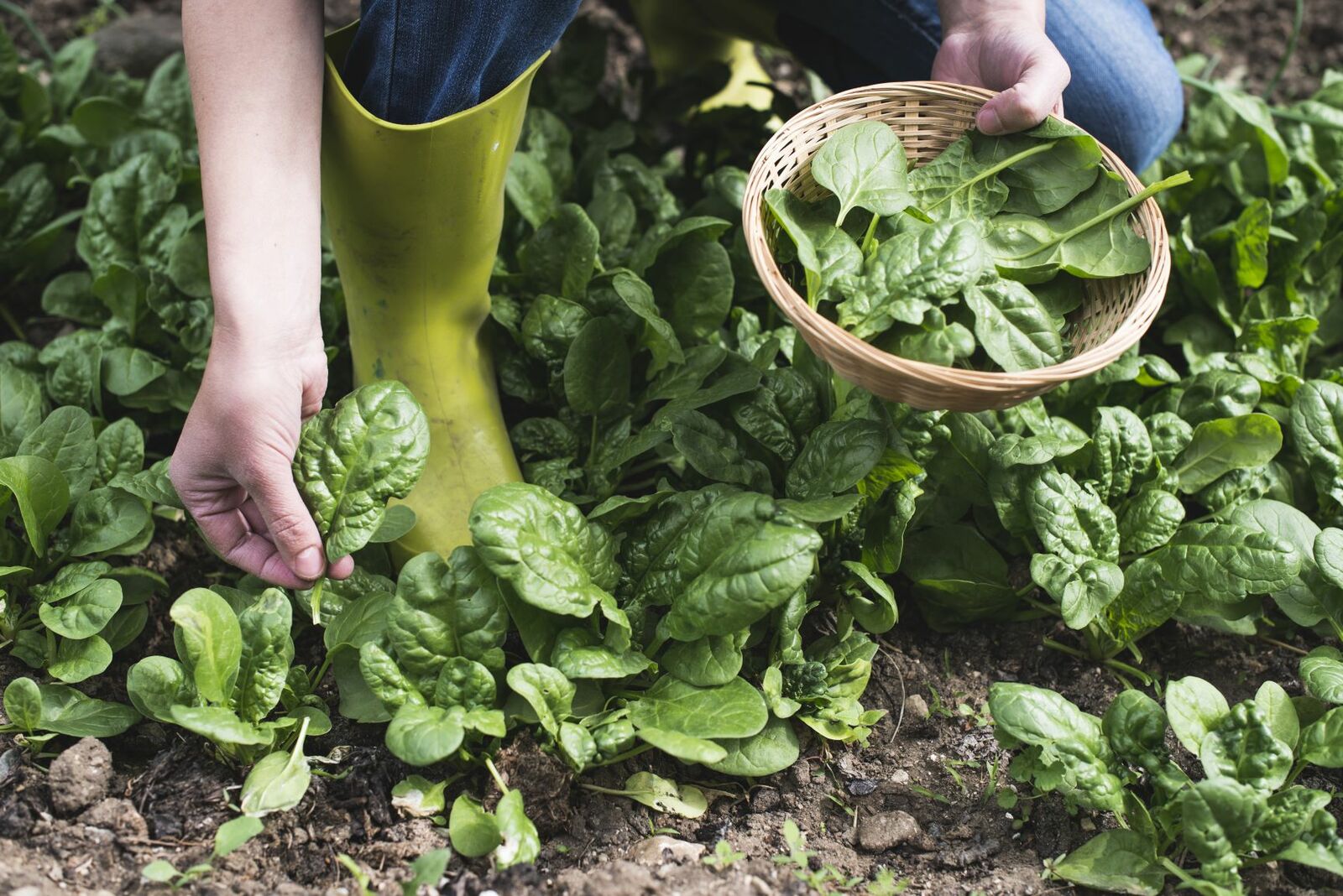
When Is the Best Time to Sow and Plant Winter Vegetables?
When we are still totally focused on sun, tomatoes and peppers in summer, we start planning for winter vegetables. Winter vegetables are therefore sown directly into the bed between July and September or grown in advance, as the plants need some time to grow big enough to survive the cold winter. The growth phase therefore mainly takes place in the months before winter sets in, as the lack of light in winter means that the plants stop growing or grow very little. Some plants even stop growing as soon as the first frosts start and then continue growing in spring. However, if they are planted in the late fall of the previous year, they have a head start over plants sown in the spring and can be harvested very early. This is the case with some field bean varieties, for example. Winter onions or garlic can also be sown late in the year and harvested accordingly early in the year. You can find an overview of the best times for sowing, planting and harvesting winter vegetables in our downloadable PDF.
What Can You Grow in Winter?
There are numerous crops that you can also grow in winter in a protected greenhouse. Crops that are not frost-resistant can also be grown here. In contrast, you should only plant crops outdoors that are hardy and frost-resistant. Leeks, for example, are a crop that you can leave in the field throughout the winter, provided you choose a hardy variety. The onion crop copes well with frost and can be kept in the field for a long time. However, leeks are sown in April/May so that they can develop throughout the summer. We list below which other plants grow well outdoors.
Growing Winter Salads
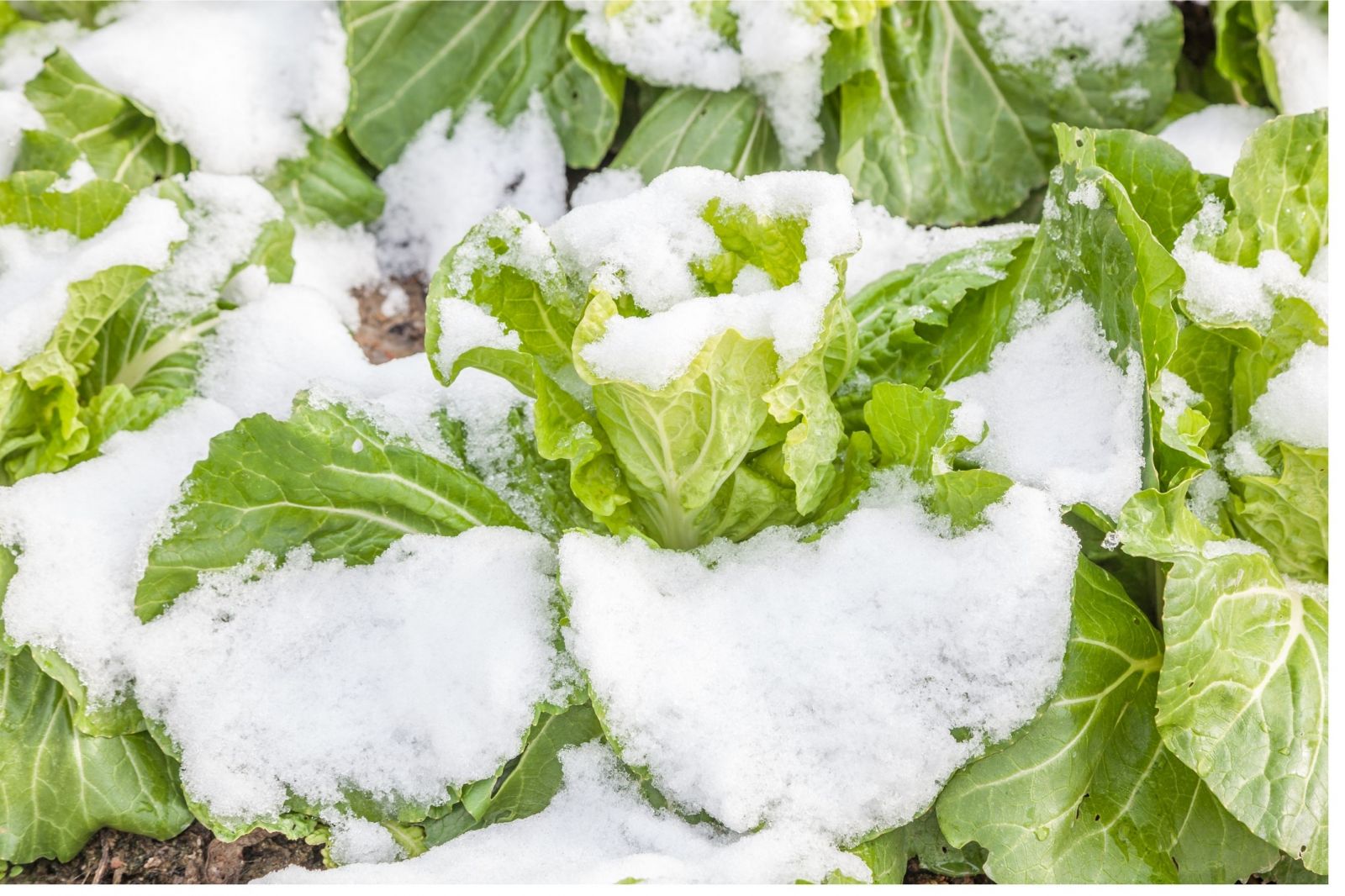
Winter lettuces are a great way to harvest fresh lettuce from your garden over the cold months. Winter purslane or lamb's lettuce, for example, are suitable for this. It is often mistakenly assumed that the plants can withstand frost better when fully grown, but it has been scientifically proven that lettuce can cope better with frost when young than when fully grown. You can find more information about Growing Lettuce in Winter, Including Varieties and Sowing Tips in this article.
- Winter purslane: The purslane plant can be sown in the field from September until February. After around 8 weeks, it can then be harvested until spring. Purslane tastes delicious in salads, stir-fries or soups and also provides important minerals.
- Lamb's lettuce: Winter lettuce is probably one of the best-known winter crops that can be sown right through to October. Depending on the weather, it can also be harvested until spring. A mixed crop with cabbage or winter purslane is a good option here.
- Sugar loaf: Like chicory or radicchio, you can use this chicory plant to make delicious and healthy winter salads. Sow the seeds 30 cm/11.8 in apart by mid-July. The seeds should be about 2 cm/0.8 in deep in the soil. You can harvest the sugar loaf after just 8 - 12 weeks. But if you want to use it in winter too, that's no problem: the plant is very robust and can be harvested throughout the winter.
Growing Cabbage in Winter
For cabbage vegetables, varieties that do not form a dense rosette, e.g. pak choi or leafy chinese cabbage, are particularly suitable. The better the leaves are aerated, the less moisture can accumulate there, which then freezes. One of the most cold-resistant varieties is kale, which is available in many different varieties. Perennial cabbage, also known as tree kale, is also particularly stable, even for several years. Brussels sprouts, which are grown in the fall, can also survive the winter well if they are covered a little. A special variety of broccoli, which is unfortunately rarely found in local markets, is sprouting broccoli - one more reason to grow it in your own garden, as it can withstand temperatures as low as -12 ° C/ -54 ° F and is therefore a perfect winter vegetable. You can find more Growing Tips on Planting, Caring for and Harvesting Cabbage in this article.
- Chinese cabbage: Sown at the end of July, this cabbage variety can even withstand temperatures of - 4 °C/ -39 ° F. Wrapped in garden fleece or brushwood, it can be harvested until the end of November in mild climates.
- Butter cabbage: This cabbage can also be sown until the end of July. With the first frosts, it begins to develop its head of cabbage, which turns yellow to orange. You can then start harvesting from November: Either remove individual leaves from the outside or cut off whole heads if necessary. From February, the butter cabbage starts to turn green again on the inside.
- Kale: Kale is a well-known winter vegetable. It only starts to taste really good from cooler temperatures. This classic vegetable can be planted from July to the end of August . The earlier it is planted, the more time it has to develop vigorously. It can finally be harvested from the first frosts in the fall. But it's worth waiting: the longer the cabbage is exposed to frost, the sweeter and milder its taste. To harvest, you can cut off individual leaves from the crown.
- Brussels sprouts: Brussels sprouts should be sown in mid-May so that they have enough time to develop. The small florets can then be harvested from November. As with kale, the more frost the cabbage can withstand, the milder its taste.
- Savoy cabbage: The variety 'Winterfürst 2' can be sown from May to June. It is very cold-tolerant and withstands temperatures of -10 °C/ -50° F well. Depending on how early it is sown, the winter variety can be harvested as early as the end of October. However, this robust cabbage can also be harvested until the new spring.
Growing Root Vegetables in Winter
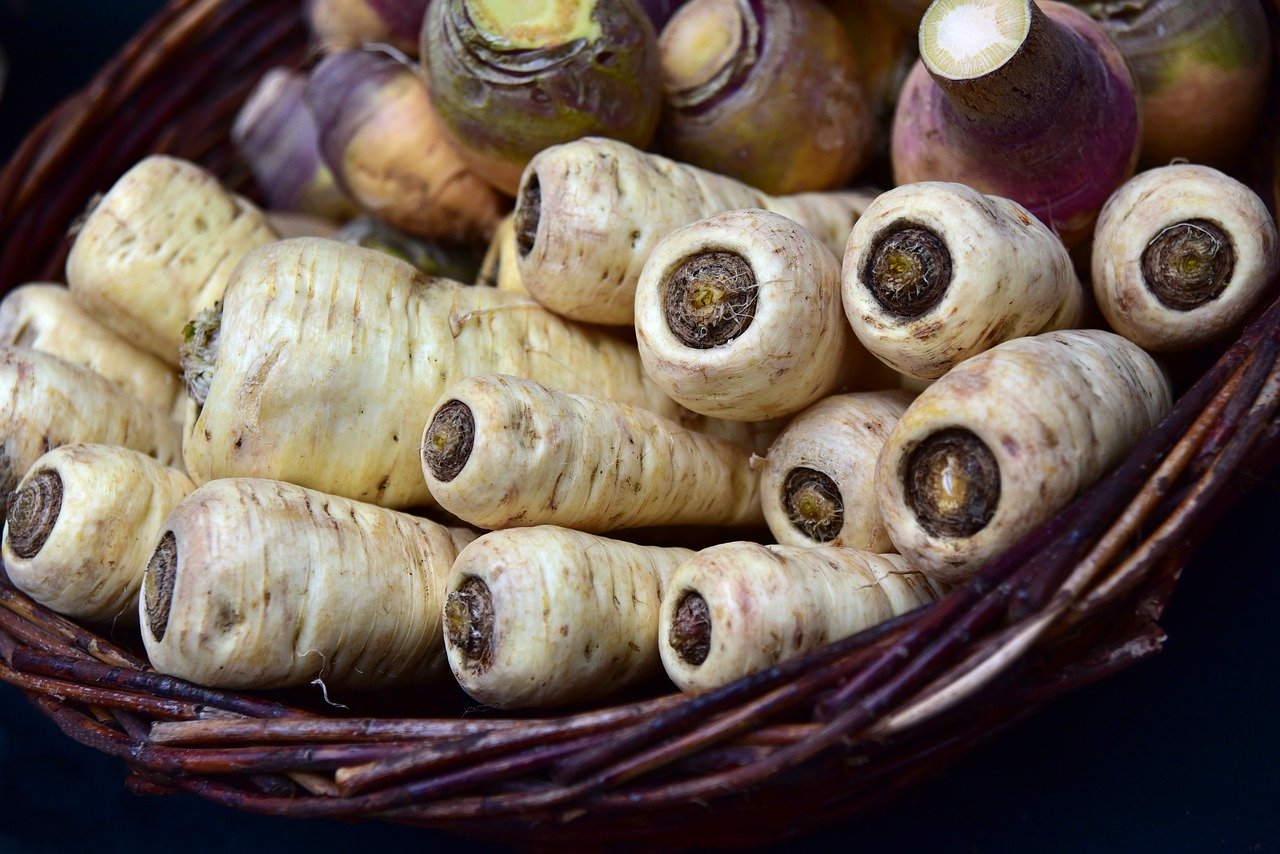
When growing root vegetables, varieties that are designed for the fall and also have a short cultivation period are particularly suitable. Beetroot is more cold-tolerant than carrots, but these can also be harvested in an unheated greenhouse into the winter. However, the most frost-hardy root varieties are parsnips and root parsley, which is also due to the fact that they are native to Central Europe. Below you will find examples of root vegetables that can overwinter and be grown in the field.
- Parsnip: This root vegetable is great for overwintering. Sow in April in rows 40 cm/15.7 in apart. The roots remain in the soil and can be dug up from October until late in the winter if necessary. Only when the sub-zero temperatures persist should you stop touching the roots and wait until the soil thaws again. If this takes too long, dig up all the parsnips and store them in a dark, dry, cool place (cellar). Choose a hardy variety for winter cultivation.
- Black salsify: Black salsify is a vegetable that is currently very trendy. It is also known as winter asparagus due to its taste. The root seeds can be sown in 2 cm/0.8 in deep grooves from April. As soon as the leaves start to turn yellow, they can be harvested. This is usually the case from mid-November. To avoid damaging the roots, dig a 30 cm/11.8 in deep trench close to the row of plants and pull the roots out towards the trench. The black spears can be peeled like asparagus. It is easier to peel them if you boil them in salted water first. The milky juice that comes out of the roots is sticky and causes dark discoloration on the hands. These can be removed with lemon juice. Black salsify tastes great in stews, as a cream soup or as a side dish.
- Jerusalem artichoke: This type of sunflower from North America forms bulbous, brown-purple appendages on its roots, which can be harvested. You can plant the tubers outdoors from mid-April. Make sure you leave enough space between them and other vegetables, as this fast-growing plant likes to crowd out other crops. The plants grow up to three meters high over the summer. As soon as the upper part of the plant has died back, the roots can be harvested. From October to March, you can dig up parts of the roots as required, as the dug up parts cannot be stored for long.
Which Vegetables Can Be Planted and Sown in the Fall?
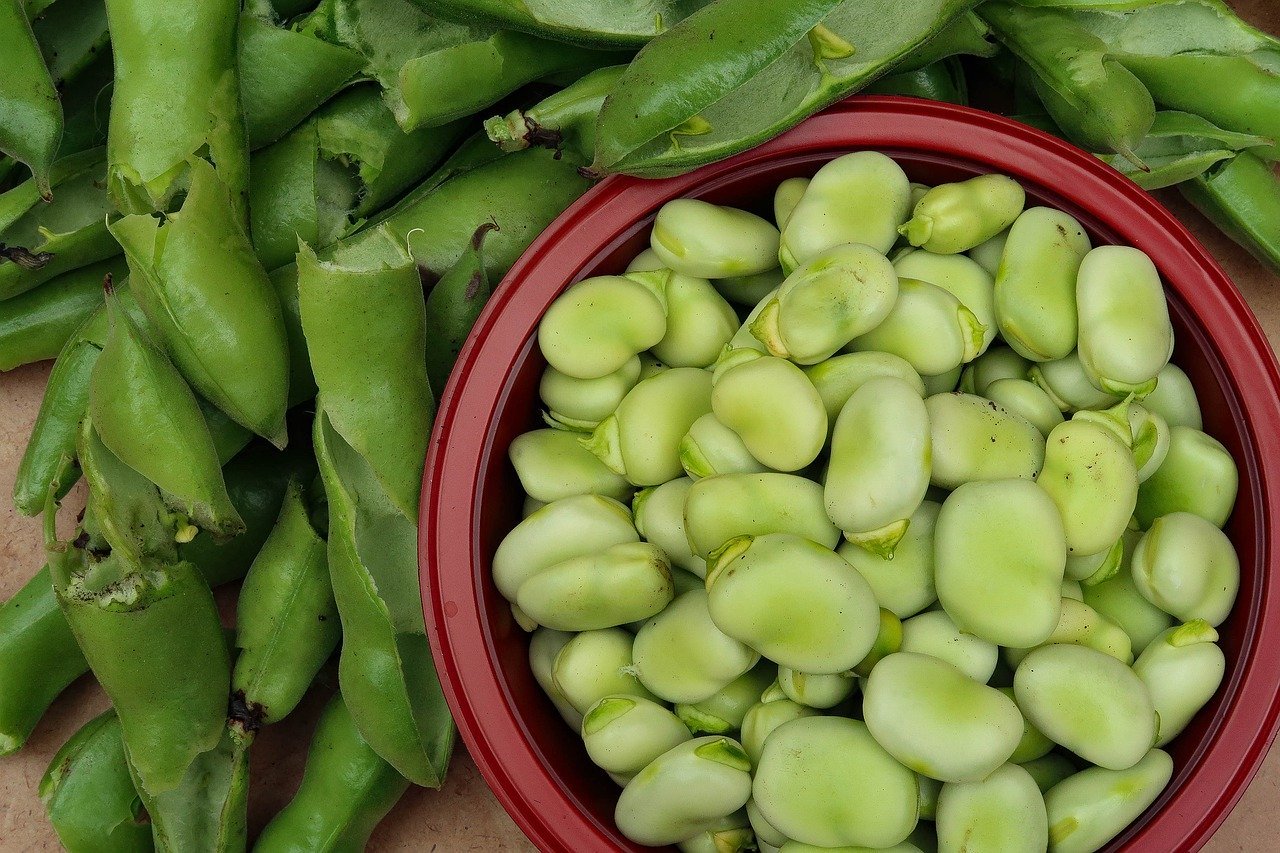
- Winter cress: This cress variety can also be sown in September. Around 8 - 12 weeks later, you can harvest the feathery leaves and flowers. The frost-hardy plant can also survive in the field until late in the winter. Winter cress tastes particularly good in salads or on bread.
- Swiss chard: This colorful classic is fairly frost-resistant and can therefore be harvested well into Christmas or even into the New Year. Hardy varieties can be sown until November. Protect the chard with a mulch layer of straw or fleece. This will ensure that the leafy vegetables survive even on very cold nights.
- Garlic and winter onions: Both can be planted in the fall (early October) so that they can be harvested the following year. Winter onions are ready to harvest from May, garlic can be harvested in July.
- Field bean: This type of bean can be sown in the fall (September) so that it can start to sprout. As no stems form at the beginning, the broad bean can withstand temperatures as low as -8 °C/-46 ° F. At the beginning of spring, the plant will continue to grow and produce early harvests. The field can then be used for another crop that benefits from the nitrogen-enriching effect of the legume. Tomatoes or celery, for example, are suitable for this.
- Spinach: Spinach can also be sown until the beginning of October. It is then harvested from mid-November to early April. Choose robust, hardy varieties such as 'Andromeda F1'. On very cold nights, the spinach can also be covered with fleece or riprap.
Planting Winter Vegetables on the Balcony
If you want to grow winter vegetables on your balcony, you should insulate your pots and containers really well. These cool down much faster than the garden soil, which is why even the hardiest winter vegetables often succumb. Even if the plant can cope with the frost on its own, it cannot absorb frozen soil water. As a result, it will eventually die of thirst during prolonged frosts. You can use polystyrene sheets around your pots as insulation material or place them in jute bags filled with leaves. Coconut mats also work well as protection against the cold. Cover the soil in the container with fleece or brushwood. It is best to place your pots close to the wall of the house, as it is much more sheltered and warmer there in winter than on the balustrade of the balcony.
Winter Vegetables That Are Suitable for the Balcony:
- swiss chard
- lamb's lettuce
- kale
- butter cabbage
- savoy cabbage
- beet
- spinach

Mixed Crop Planting Plans for the Winter: Examples and Ideas
For inspiration, you will find mixed cultivation bed plans from experienced gardeners such as Wolfgang Palme, Charles Dowding and Patrick Kaiser.

Mixed Cultivation Made Easy!
With our bed planner, you can easily plan a colourful mixed crop. Good and bad neighbours are displayed directly and you get tips on succession cropping and crop rotation!
Try out Our Bed PlannerRaised Beds in Winter: Here’s What to Keep In Mind
In summer, raised beds have the advantage that they warm up much faster than normal soil due to their elevated position, but they also cool down more quickly in the fall. That's why you should also provide adequate protection against the cold here:
- Wrap the bed with garden fleece, bubble wrap or a coconut mat. This not only protects the material, but also the roots of the winter crops in the raised bed.
- A layer of mulch made from straw or cuttings is suitable as a protective layer. You can also cover more sensitive crops with fleece or brushwood.
- Cold frames can not only bring your gardening season forward in spring, but also extend it in late spring. Thanks to the translucent plastic or glass, they keep moisture and warmth in the plants.
It's not just the raised bed that needs to be prepared for winter. There are also a few things to do in the garden before the cold months set in. You can find out How to Winterize Your Garden in this article.
I hope you now have a good overview of growing winter vegetables. I wish you lots of successful harvests in the cold winter months too! If you have any questions or comments, please write to us at [email protected].
Want to get helpful gardening tips all year round and plan your own beds in the best possible way? Then register here or download the Fryd app for Android or iOS.
Fryd - Your digital bed planner

Isabell
Isabell studies agricultural sciences and loves to be surprised by nature and its complexity again and again. Herbs - whether gathered wild or in the garden - are her passion.
Learn MoreCurrent Topics in the Community
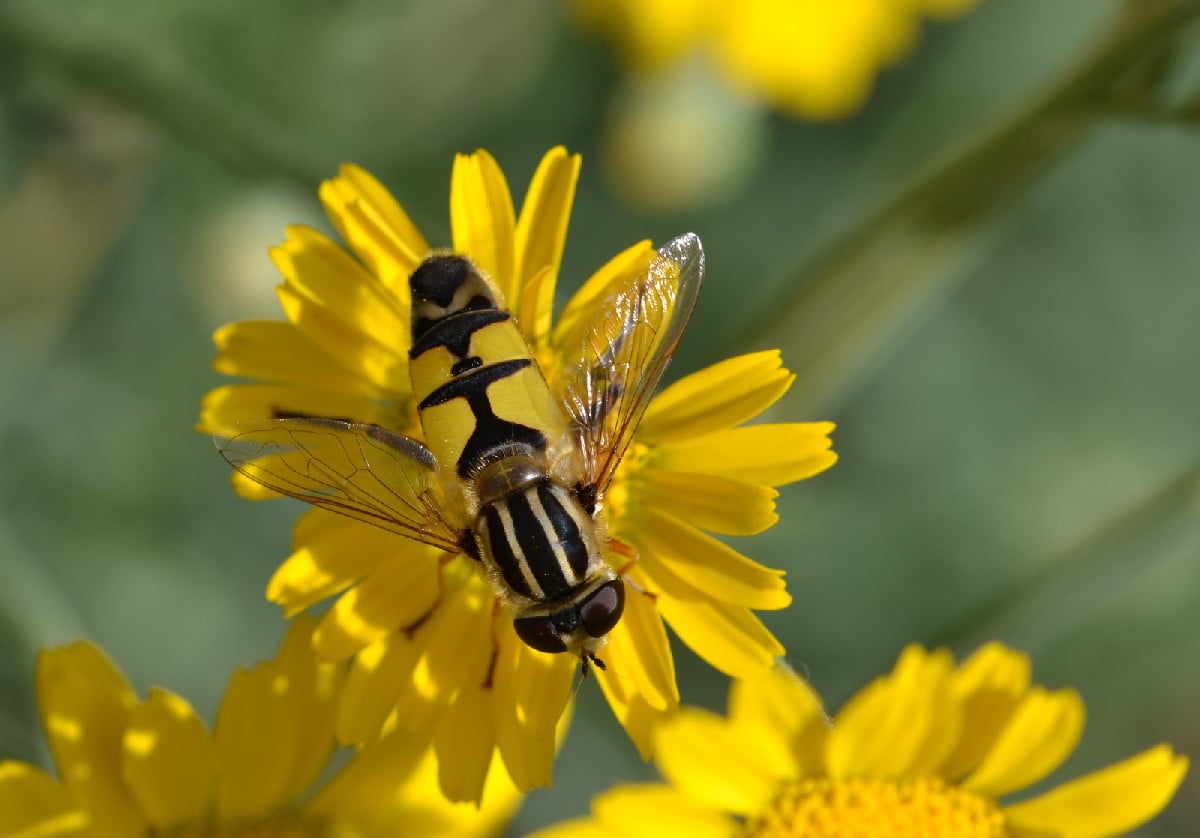
Liked 2 times
With these photos from my own garden, I would like to draw your attention to a very interesting webinar series that can be found on the naturadb website. Starting this week, there will be an online lecture on an insect species once a month on a Thursday from 6 pm to about 8 pm. It starts with the ants, followed in the order of my photos above: hoverflies, dragonflies, butterflies, wild bees, grasshoppers, beetles, digger wasps, caddisflies and co. and at the end there is one on flower ecology. So if you're interested in getting to know native insect species better and attracting them to your own garden, you're sure to find plenty of inspiration here 😀.
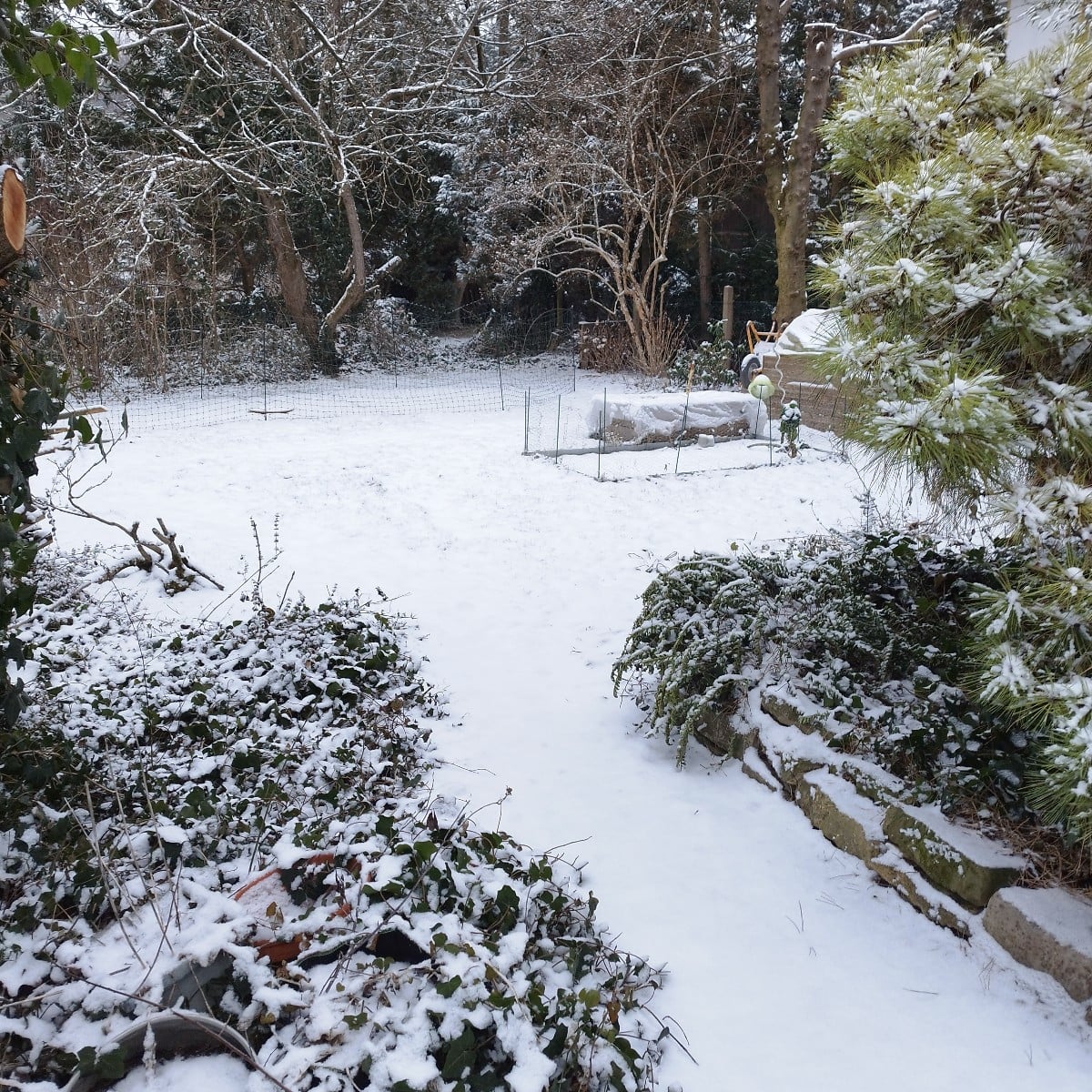
Liked 1 times
Everything is in hibernation... The chickas don't want to know anything about the "funny white stuff" and prefer to stay in the stable.
Show 1 answer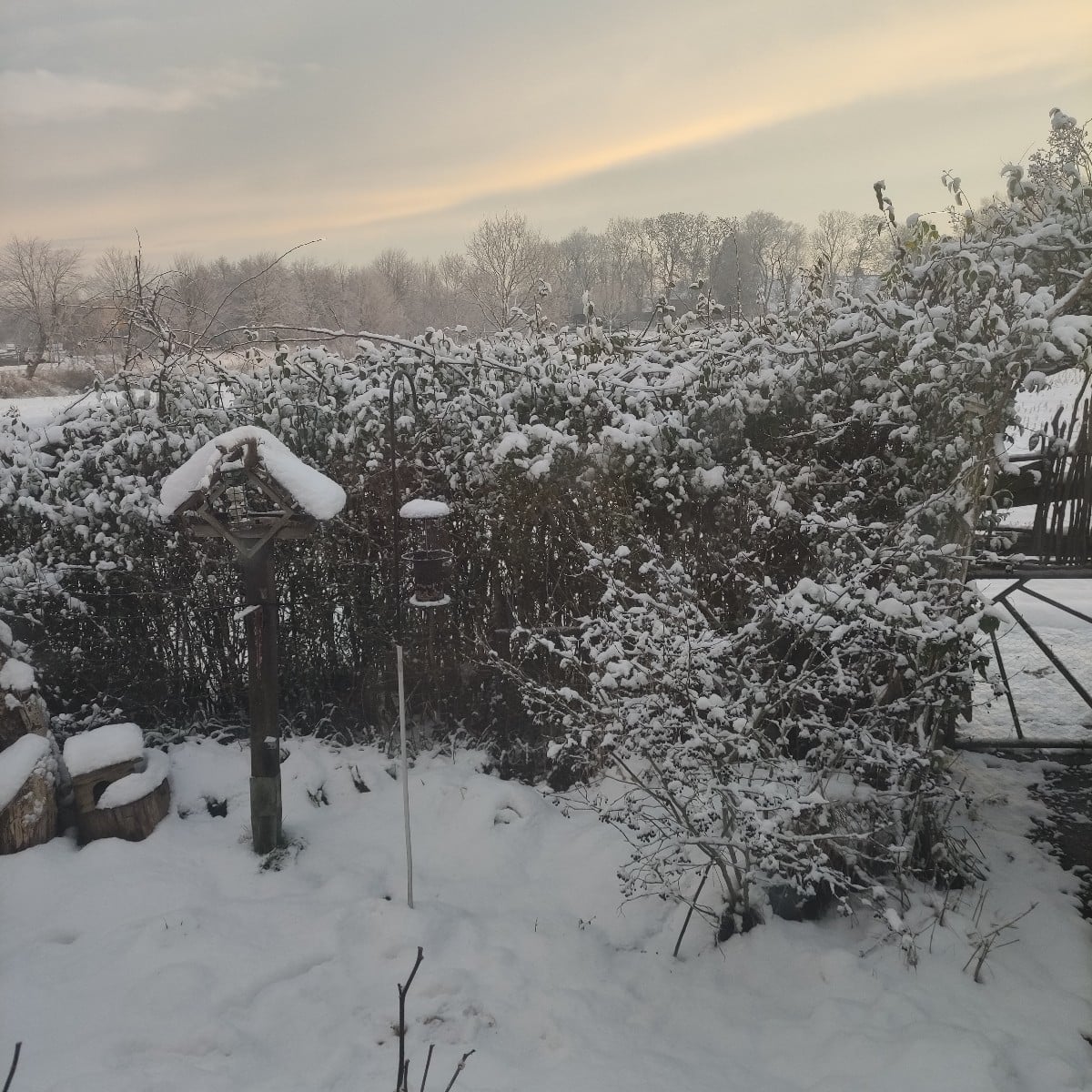
Liked 1 times
More snowfall has been announced. ☃️😵💫
Popular Articles

Overwintering Parsley: How to Do It Successfully

How to Grow Lettuce in Winter: Varieties, Sowing, Harvesting

Growing Sage Plant: Tips for Sowing and Harvesting

What Herbs Can Be Planted Together?

Create & Design a Permaculture Garden

Overwintering Plants: Tubs, Pots and Raised Beds

Pruning, Fertilizing & Propagating Currants: Care Tips

Pruning Raspberries: How to Do It

Vegetable Garden With Greenhouse: How to Use Greenhouse Effect

Winterizing Beds and the Garden: How to Do It
FAQ
In a heated greenhouse, you can actually grow all crops in winter. In the open, you can only plant frost-hardy crops. These include, for example, stem cabbage, chard, winter lettuce, cabbage and some root vegetables such as parsnip and salsify.
Which vegetables can you plant in the fall?
In the fall, you can sow and plant winter cress, chard, garlic, winter onions, field beans, many cabbages and spinach, for example. These crops can also be left in the field and harvested over the winter.
What should I bear in mind when growing winter vegetables on the balcony?
When growing vegetables in pots, it is important to insulate the pots well in winter and place them in a sheltered location. This is because the soil freezes more quickly in pots, causing frost damage to the plants. Even the most frost-hardy plants will die.
Is it possible to grow vegetables in raised beds in winter?
You can grow vegetables in raised beds in winter, but you should also ensure that they are well insulated. The best way to do this is to wrap the bed in fleece, for example, and add a layer of mulch.
